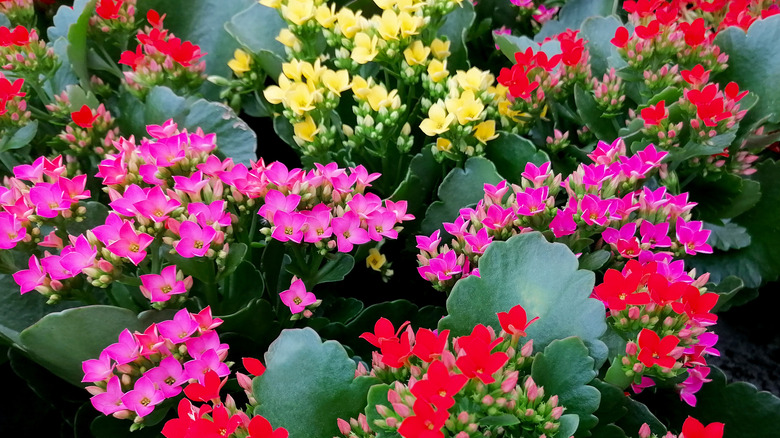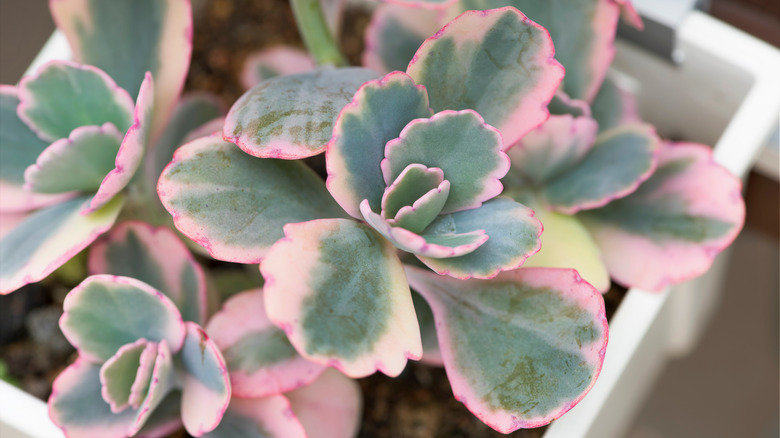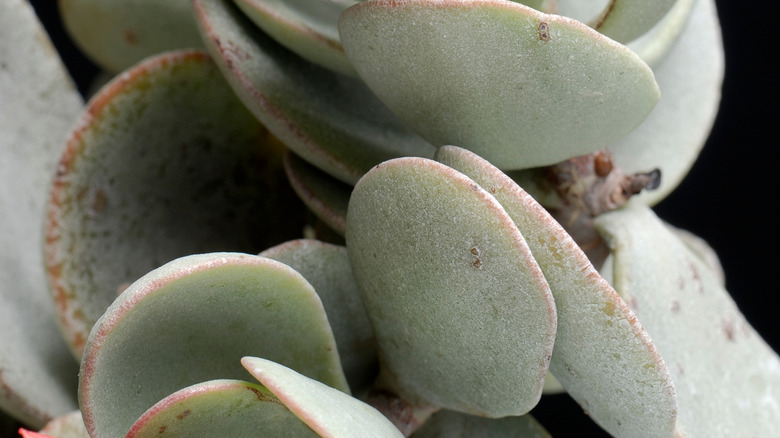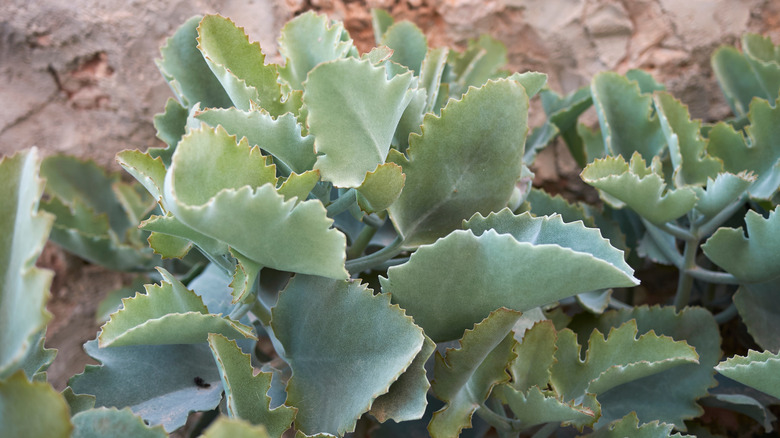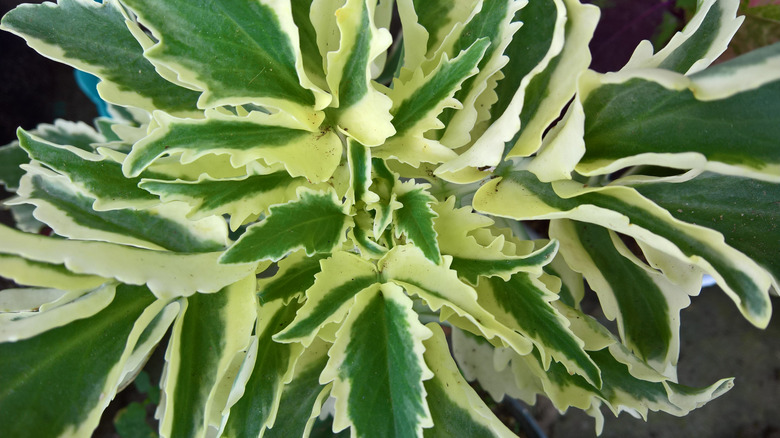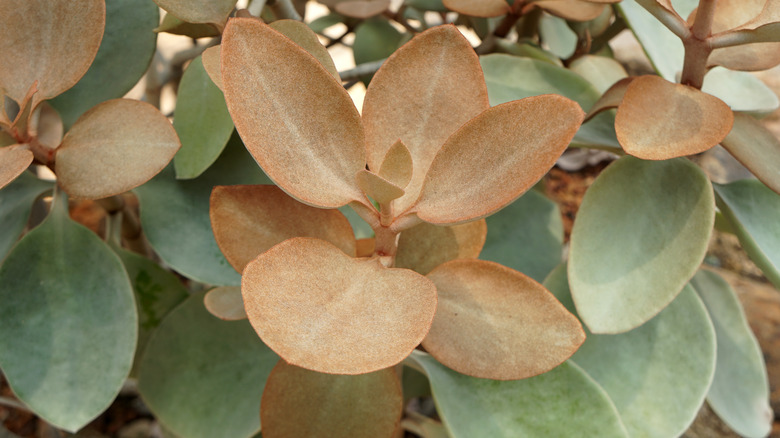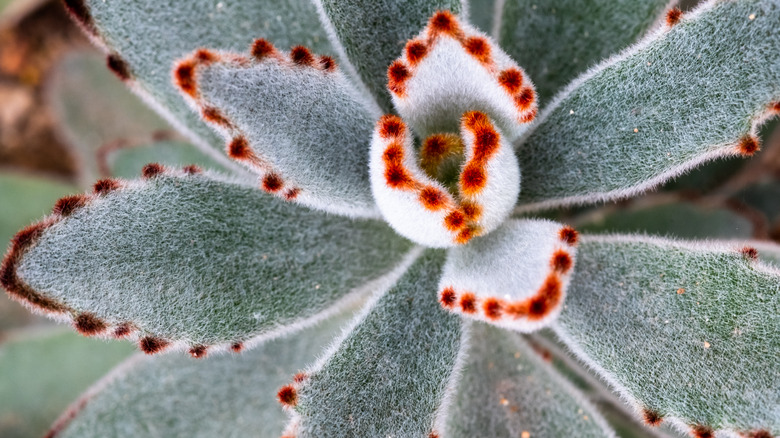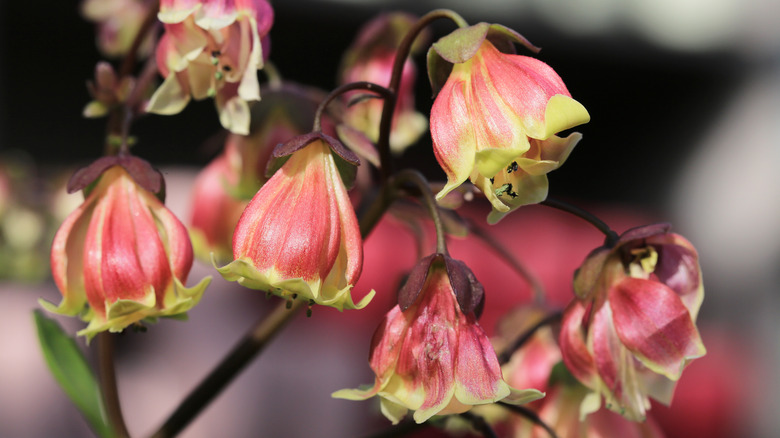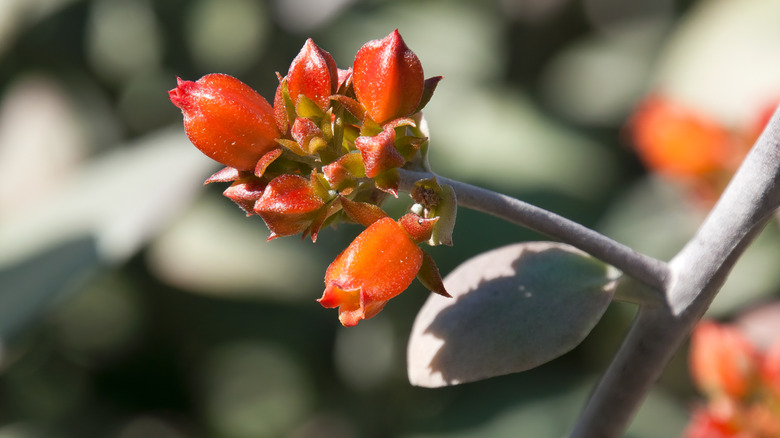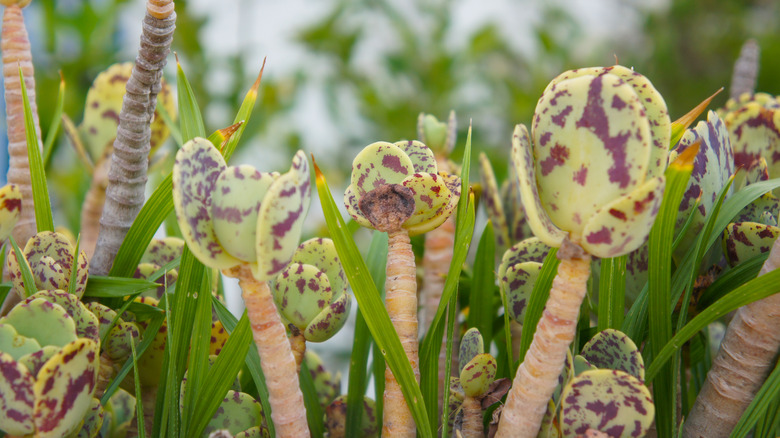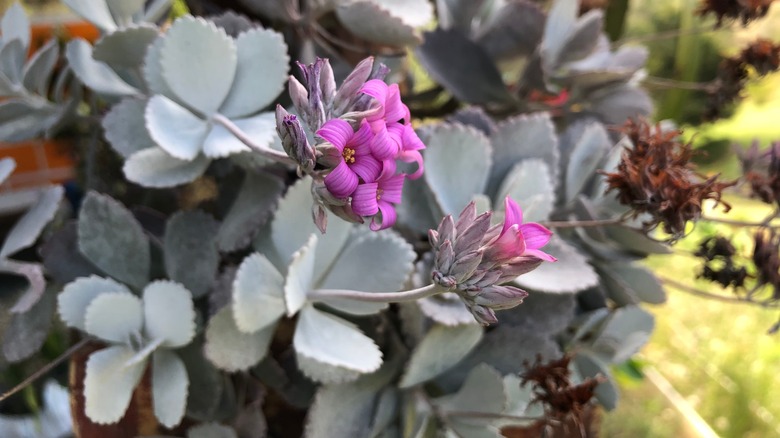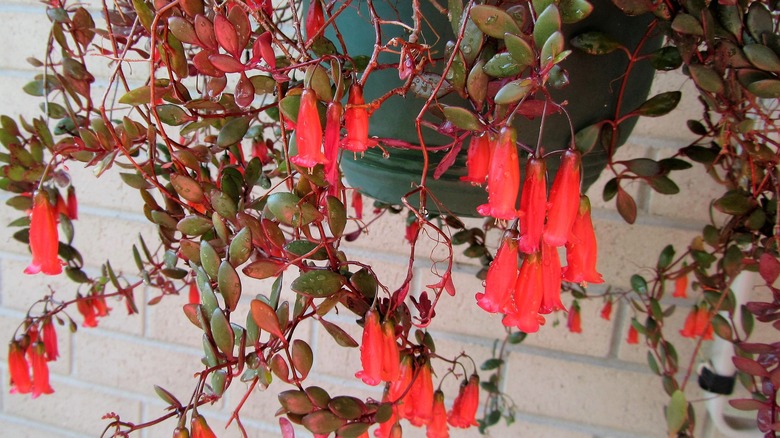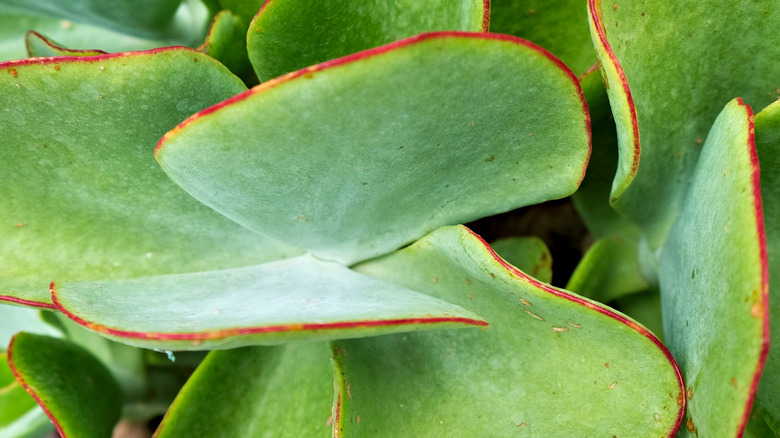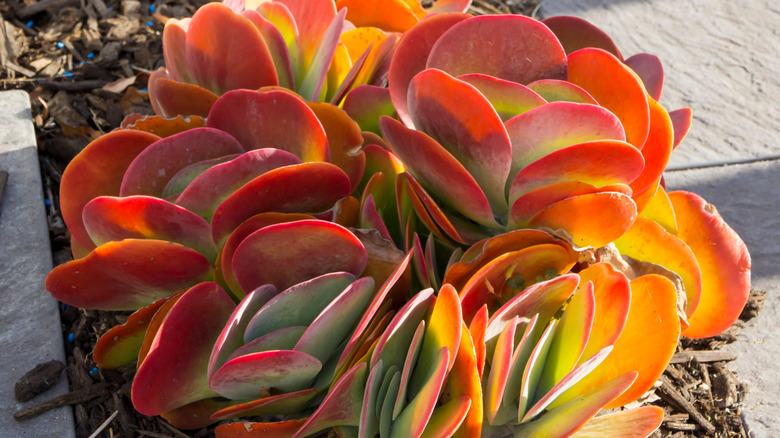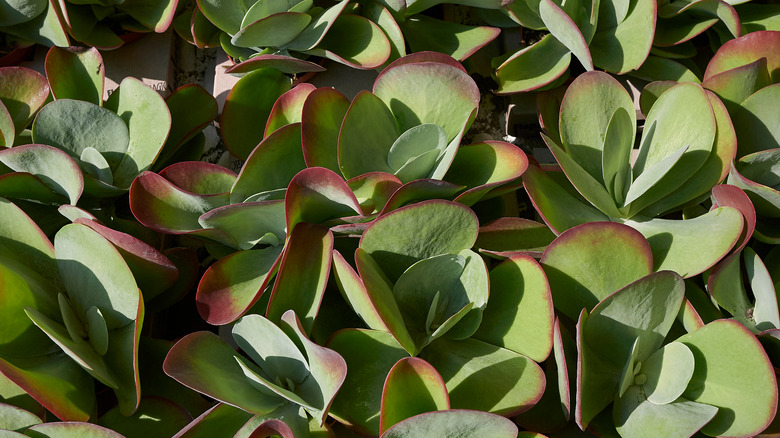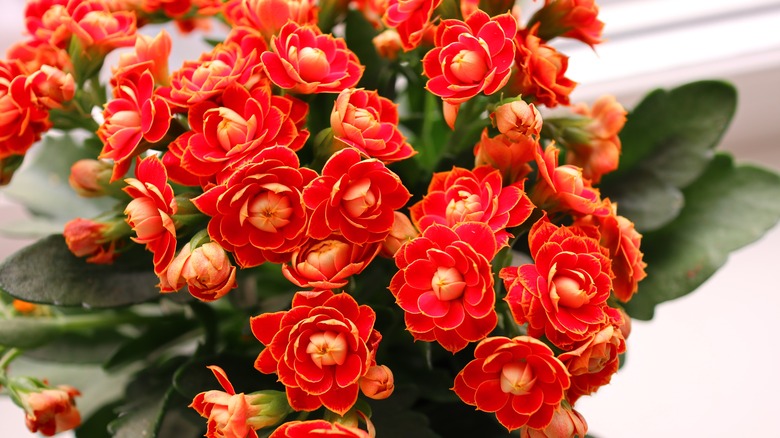15 Kalanchöe Plants To Grow In Super Sunny Spots
Kalanchöe succulents have been a popular choice for inexperienced plant owners who want something to grow and forget about. For the most part, these warm weather and sun-loving plants need no attention once they are home in a container or your garden. With bright sunshine, a little water, and the right soil, your kalanchöe plant should happily grow its fleshy foliage and colorful blooms.
According to Royal Botanic Gardens KEW, there are 165 approved species of kalanchöe in the Crassulaceae family. All are native to the continent of Africa, as well as many countries in Southeast Asia. Because of their native range, the species cannot naturalize in many northern countries where they are exposed to frost in the winter. Still, many of them thrive as houseplants, and they bloom indoors. This includes panda plants (Kalanchoe tomentosa), calandiva (Kalanchoe blossfeldiana), and chandelier plants (Kalanchoe delagoensis). Whether you're looking for a new addition to your indoor or outdoor garden, there is a kalanchöe species for you that will develop healthily in the sunlight with minimal maintenance requirements.
1. Variegated kalanchöe
Lavender scallops (Kalanchoe fedtschenkoi), also called variegated kalanchöe, is a tall-growing succulent plant with fleshy blue-green leaves outlined by white and pink variegation, as described by Mountain Crest Gardens. As fall and winter approach, variegated kalanchöe plants produce hanging pink blooms that brighten already sunny spots.
Bloom Season: Fall to winter
USDA Growing Zone: 10 to 11
Growing Conditions: Full sun or partial shade
Soil Type: Gritty and well-draining
Size: 24 inches tall and 14 inches wide
2. Mealy kalanchöe
Mealy kalanchöe (Kalanchoe scapigera) is another winter-blooming type with a relatively tall growth habit, as The National Gardening Association pointed out. This succulent subshrub is characterized by nearly circular, green leaves and bright red, tubular blooms. Though, you should be careful of these flowers if you have children or pets; they are the most toxic part of the plant.
Bloom Season: Fall to early winter
USDA Growing Zone: 10 to 11
Growing Conditions: Full sun or partial shade
Soil Type: Slightly acidic and well-draining
Size: 12 to 18 inches tall
3. Felt bush
Felt bushes (Kalanchoe beharensis) are known for their giant leaves with the same texture as felt, hence the common name. Also referred to as elephant's ear kalanchöe, this species is considered a tree-like succulent shrub that can become as tall as 20 feet when grown in perfect conditions, as said by Missouri Botanical Garden.
Bloom Season: Spring to summer
USDA Growing Zone: 11 to 12
Growing Conditions: Full sun or partial shade
Soil Type: Gritty and well-draining
Size: 3 to 5 feet tall and wide
4. Christmas tree plant
The Christmas tree plant (Kalanchoe laciniata) is a popular type of kalanchöe that looks somewhat similar to the variegated kalanchöe. It boasts evergreen leaves that are mostly light green; however, the foliage is also streaked with shades of yellow, cream, white, and hot pink, depending on the variety, as shown by The National Gardening Association.
Bloom Season: Winter to spring
USDA Growing Zone: 9 to 11
Growing Conditions: Full sun or partial shade
Soil Type: Well-draining
Size: Over 3 feet tall
5. Copper spoon
Copper spoon kalanchöe (Kalanchoe orgyalis) is a sun-loving succulent plant that prefers rocky and dry soil along warm coastlines. Native to the country of Madagascar, the copper spoon succulent blooms during the wintertime as long as temperatures are warm enough. According to San Marcos Growers, you can recognize this plant by its folded yellow-orange foliage and yellow blossoms.
Bloom Season: Winter
USDA Growing Zone: 9 to 11
Growing Conditions: Full sun
Soil Type: Well-draining
Size: 4 to 6 feet tall and wide
6. Panda plant
Panda plants (Kalanchoe tomentosa) are a common houseplant, especially in colder areas where the plant cannot survive outdoors. Mountain Crest Gardens mentions that the fuzzy succulent is covered in soft hairs due to the conditions in its native environment. They allow the plant to live in scorching and dry climates. When growing the panda plant indoors, provide it with plenty of direct sunlight and well-draining soil amended with gritty ingredients such as coarse sand.
Bloom Season: Spring
USDA Growing Zone: 10 to 11
Growing Conditions: Full sun
Soil Type: Well-draining
Size: 1 foot tall
7. Kalanchöe 'Wendy'
Kalanchöe 'Wendy' (Kalanchoe manginii 'Wendy) is a popular variety of the Kalanchöe species known as The beach bells plant. The Royal Horticultural Society describes it as a bushy, evergreen succulent with bell-shaped flowers atop arching stems. Kalanchöe 'Wendy' is chosen for its purple-pink flowers, yellow tips that bloom in winter, and darkly colored leaves.
Bloom Season: Winter
USDA Growing Zone: 10 to 11
Growing Conditions: Full sun
Soil Type: Well-draining
Size: Up to 1 foot tall
8. Silver teaspoons
The silver teaspoons plant (Kalanchoe bracteata), a member of the Crassulaceae family, is a perennial succulent native to Madagascar that can become 4 feet tall and wide once it matures, according to North Carolina Extension Gardener Plant Toolbox. The plant is named after its silvery-gray circular leaves and about the size of a teaspoon when the kalanchöe species is still young.
Bloom Season: Summer
USDA Growing Zone: 9 to 11
Growing Conditions: Full sun or partial shade
Soil Type: Well-draining
Size: 2 to 4 feet tall and wide
9. Penwiper plant
The penwiper plant (Kalanchoe marmorata) is a particular type of kalanchöe with spotted leaves. The foliage most often shows off a blue-green hue, while the spots tend to look dark purple or even brown. In the winter, a bloom stalk appears above the foliage and produces several flowers, per Mountain Crest Gardens.
Bloom Season: Winter to spring
USDA Growing Zone: 10 to 11
Growing Conditions: Full sun
Soil Type: Gritty and well-draining
Size: More than 1 foot tall
10. Flower dust plant
Flower dust plants (Kalanchoe pumila) can be planted as houseplants or landscape plants. The low-growing kalanchöe succulent works well in succulent containers, rock gardens, and alpine gardens, as suggested by Proven Winners. Its purple leaves and small pink flowers make it a superb specimen to keep near a busy path where it can be admired, especially in the spring.
Bloom Season: Spring
USDA Growing Zone: 9 to 11
Growing Conditions: Full sun or partial shade
Soil Type: Well-draining
Size: 6 to 10 inches tall
11. Chandelier plant
The chandelier plant (Kalanchoe manginii) is one of the few kalanchöe species that looks best in a hanging planter. The arching stems that hold its tubular flowers can drape themselves over the planter, allowing the succulent to look like a leafy chandelier, just like the common name. Logee's Greenhouses advises gardeners to keep their chandelier plants in a sunny location with well-draining soil for the best results.
Bloom Season: Winter
USDA Growing Zone: 10 to 11
Growing Conditions: Full sun or partial shade
Soil Type: Well-draining
Size: 8 to 10 inches tall
12. Common kalanchoe
Common kalanchöe (Kalanchoe rotundifolia) is another flowering succulent that shows off a stunning display of flowers atop slender stems in the spring and summer, as per Coastal Succulents and Cacti. Below the blooms, the common kalanchöe plant has rounded, fleshy leaves clustered together. Usually, this specimen is not grown as a houseplant due to its somewhat large growth habit.
Bloom Season: Spring and summer
USDA Growing Zone: 10 to 11
Growing Conditions: Full sun or partial shade
Soil Type: Gravelly and well-draining
Size: Over 3 feet tall
13. Paddle plant
The paddle plant (Kalanchoe luciae) is well-known for its extra-large leaves that are often found to be 6 inches long and 5 inches wide. According to San Marcos Growers, these enormous succulent leaves are associated with clamshells or pancakes for their shape and size. However, they are typically colored yellow, green, and red.
Bloom Season: Spring
USDA Growing Zone: 9 to 11
Growing Conditions: Full sun or partial shade
Soil Type: Well-draining
Size: 1 to 2 feet tall and 2 to 3 feet wide
14. Flapjacks
Flapjacks (Kalanchoe thyrsiflora) are frequently mistaken for paddle plants because they share the same distinct growth habit. However, as the University of Wisconsin-Madison Division of Extension said, they can be told apart because kalanchöe thyrsiflora have paler and slightly smaller leaves. If you plan to purchase flapjacks for your garden, try to be sure that you aren't being sold kalanchöe luciae by accident.
Bloom Season: Late winter and early spring
USDA Growing Zone: 9 to 10
Growing Conditions: Full sun
Soil Type: Well-drained
Size: 12 to 18 inches tall
15. Calandiva
Calandiva (Kalanchoe blossfeldiana) is among the most popular kalanchöe species grown as houseplants. They are early bloomers that bring a pop of color indoors as spring arrives. Clemson Cooperative Extension notes that this plant is highly durable, drought-tolerant, and low-maintenance. With bright sunlight and well-draining soil, you can enjoy the calandiva's red, orange, yellow, magenta, pink, or white flowers.
Bloom Season: Early spring
USDA Growing Zone: 10 to 12
Growing Conditions: Full sun
Soil Type: Well-draining
Size: 8 inches to 1 foot tall
